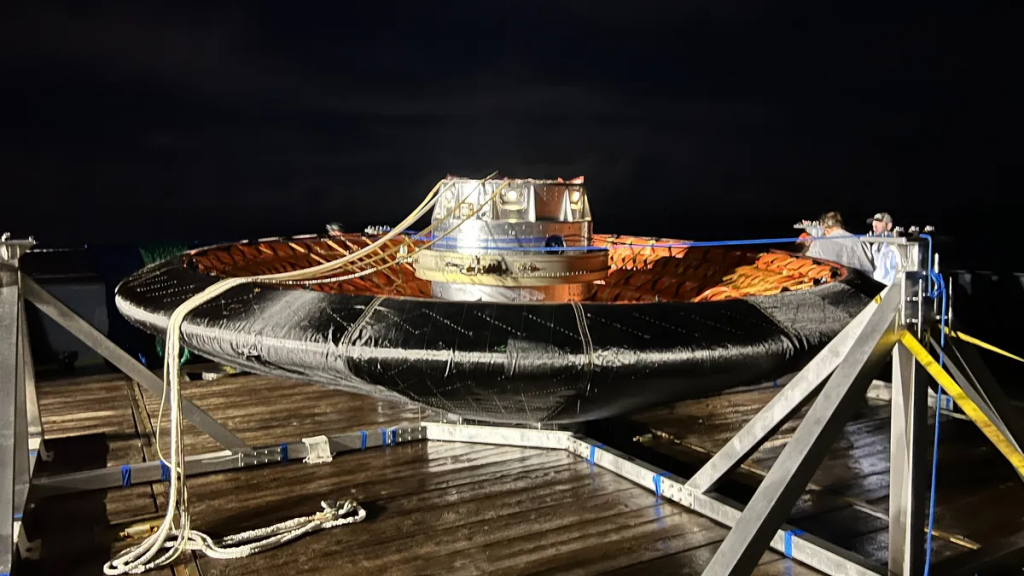NASA is working hard to prepare for the historic day when astronauts will set foot on Mars. NASA recently launched a massive inflatable object into space on Thursday morning, and when it came back from orbit, it splashed in the water not far from Hawaii.
As shown in the NASA video, a parachute lowered the aeroshell into the water.
It might be compared to a bouncy castle from space, but the mission’s leaders would prefer it didn’t.
“I would say that would be inaccurate,” Neil Cheatwood, principal investigator for the Low-Earth Orbit Flight Test of an Inflatable Decelerator, or LOFTID for short, said of the comparison during an interview.

LOFTID may appear to be completely benign, but the $93 million project demonstrates a technology that could aid NASA in its goal of safely bringing humans to the surface of Mars eventually.

NASA has landed several robotic spacecraft on Mars, but current approaches are limited to payloads weighing up to 1.5 tonnes – roughly the size of a small car. That is insufficient for larger landers hauling 20 tonnes or more, which are required for people and supplies to survive on Mars.
The heat shield is a saucer that expands to 20 feet in diameter when inflated. It is constructed of layers of fabric that can withstand falling at 18,000 kilometres per hour and temperatures nearing 3,000 degrees Fahrenheit.
Nonetheless, an inflatable heat shield shares a critical feature with a bouncy castle: it can be folded and stored snugly when not in use. Moreover, LOFTID was housed in a cylinder about four feet wide and one and a half feet high. There is no way to fit a standard rigid heat shield 20 feet in diameter into a rocket that isn’t that wide.
A larger surface, such as LOFTID’s, generates significantly more air friction, basically acting as a larger brake as it slices through the high atmosphere. The increased drag allows heavier payloads to be slowed.
In future Mars missions, the inflatable heat shield would be used in conjunction with other systems, such as parachutes and retrorockets, to guide the lander to a smooth landing.


